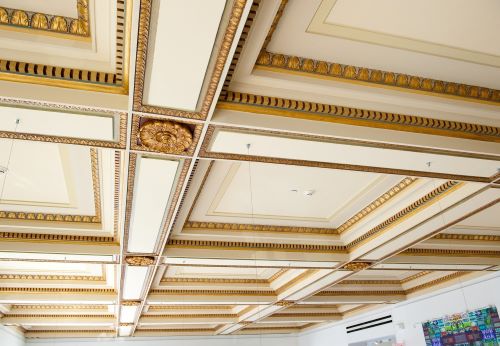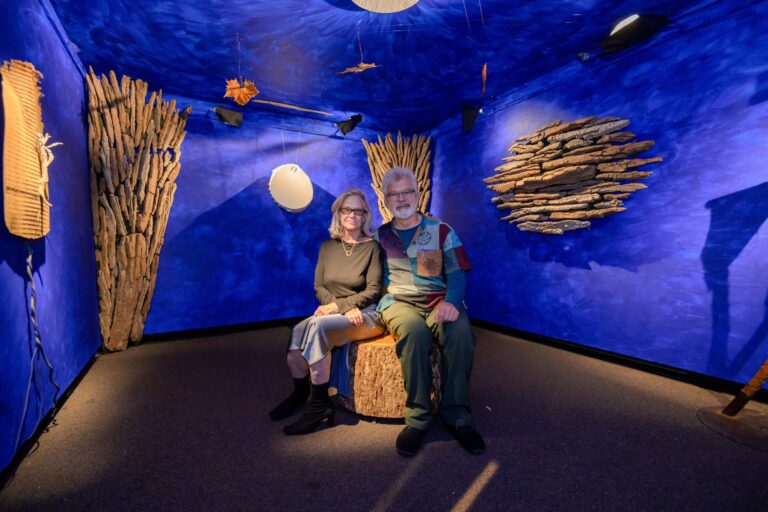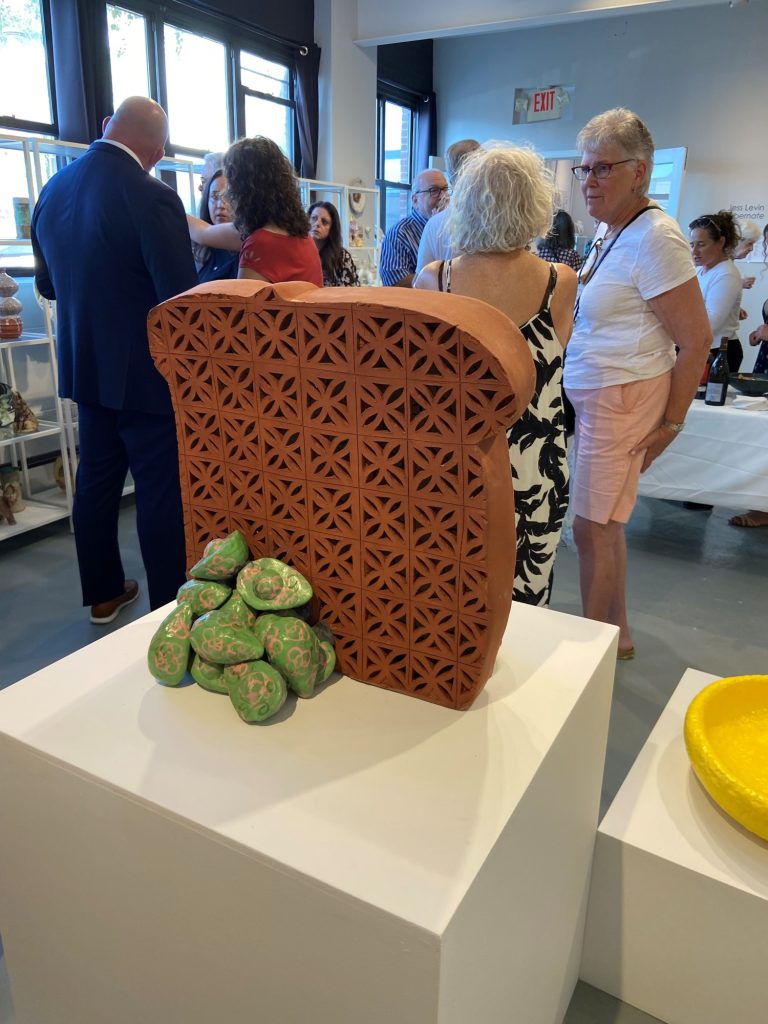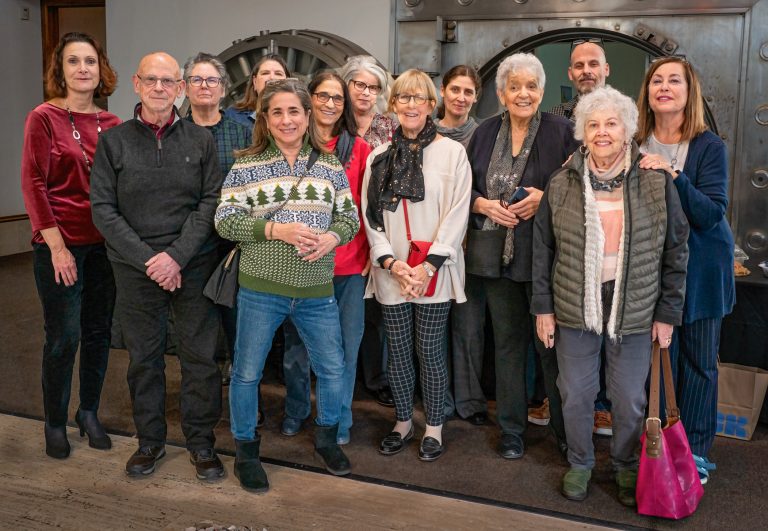From the CEO: The Ceiling
This blog post first appeared on ArtsWestchester CEO Janet Langsam’s blog, This and That By JL.
In 17th century England, it was commonplace for a ceiling to be treated as a work of art. Not so much here in the U.S.; however, such practices migrated here and can be found on occasion in places and estates that were meant to reflect wealth. Such an example presented itself when ArtsWestchester purchased its 1928 nine-story Neoclassical bank building, which was once the People’s National Bank and Trust. At first glance, when we bought the building, we were disappointed with the ceiling, which had been lowered during a renovation in the 1940s.
It was decorated with massive fluorescent lights, which was probably an asset, at least for counting money. However, when we removed the offensive lighting, we discovered a most beautiful ceiling replete with architectural coffers edged in gold leaf and decorated with floral molds, similar to the details on the building’s bronze
elevators doors.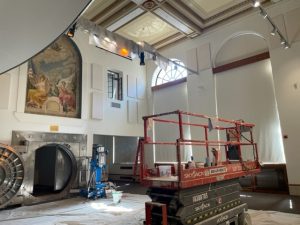
According to a booklet published by ArtsWeschester, the ceiling is made up of large sunken panels or boxes. Known as a lacunar or coffered ceiling, this method is an alternative to tile frequently seen in neoclassical and Greek revival buildings. Coffered ceilings have been with us for hundreds of years. In fact, a similar ceiling can
be seen in the Pantheon in Rome. The details in the ceiling are hand-painted in bold geometric patterns and accented by three-dimensional decorative florets placed at regular intervals.
In 2004, when ArtsWestchester restored the place, the removal of the fluorescent light panels revealed a fragment of one of these florets. Much of the plaster and paint was damaged, but the artistic quality of the ceiling was such that it became a focus of the restoration of what was called the “grand banking room,” where all mortgage and loan transactions previously took place. I suppose that in 1928, the idea of a glorious gilt-edged ceiling perhaps appealed to the bank’s customers as they managed monetary transactions and stored their treasured valuables in this fine neoclassical structure.
No adverse question was posed to the idea of restoring the ceiling as the central historic element in the building. The work was done by Evergreen, a company that specializes in the restoration of historic buildings. As they went to work on our ceiling, it thrilled me to observe the scaffolding, which was erected so that they could hand-paint the peeling paint, and make molds of the missing or damaged ornamental rosettes.
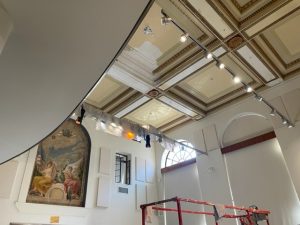 The ceiling became the centerpiece and hallmark of this artistic setting. Such a magnificent element requires tender loving care. So, when a leak recently damaged one of the coffers, it was a no-brainer to restore, rather than cover up, what has become our pride and joy. The ceiling is now being repaired by the Evergreen company at a cost far and above a sheetrock replacement. It makes me think that the custodians of historic properties must be passionate about remembering the past, and treating such examples of historic properties with authenticity and dignity. You can see the ceiling any time on a visit to 31 Mamaroneck Ave. It will warm your heart as it does mine.
The ceiling became the centerpiece and hallmark of this artistic setting. Such a magnificent element requires tender loving care. So, when a leak recently damaged one of the coffers, it was a no-brainer to restore, rather than cover up, what has become our pride and joy. The ceiling is now being repaired by the Evergreen company at a cost far and above a sheetrock replacement. It makes me think that the custodians of historic properties must be passionate about remembering the past, and treating such examples of historic properties with authenticity and dignity. You can see the ceiling any time on a visit to 31 Mamaroneck Ave. It will warm your heart as it does mine.
Photo Credit: (top left) Details of ArtsWestchester’s gallery ceilings: 31 Mamaroneck Avenue, White Plains, NY (photo credit: Lynda Shenkman Curtis)
About Janet Langsam
During her time at the helm of ArtsWestchester, the organization – formerly known as the Westchester Arts Council – has grown from a $1 million to a $6 million agency and has excelled at making the arts more visible, diverse and accessible for all. ArtsWestchester offers financial and marketing support to emerging arts groups, cultural institutions and grassroots activities throughout Westchester County.

